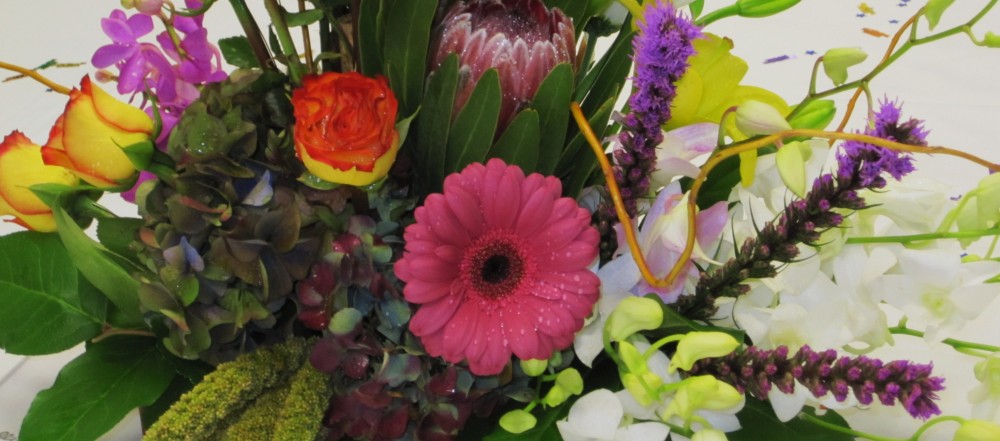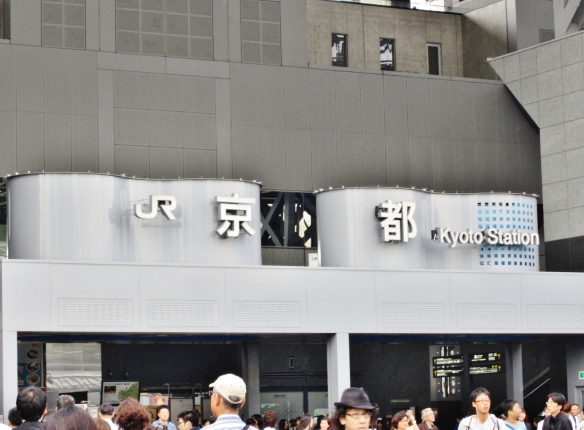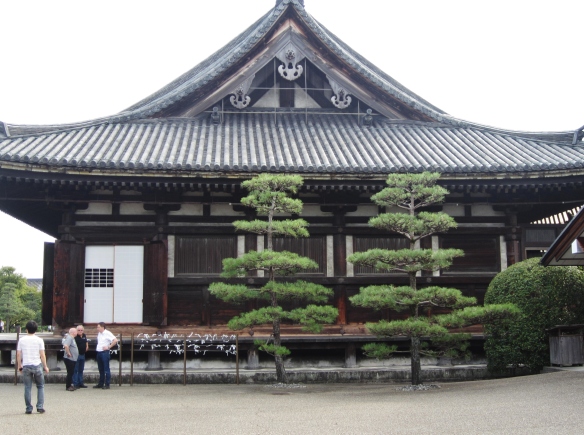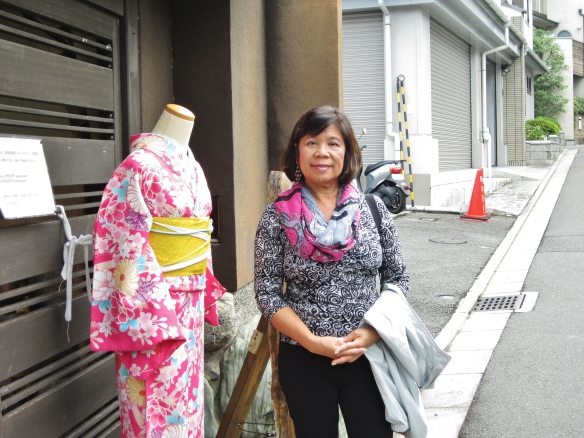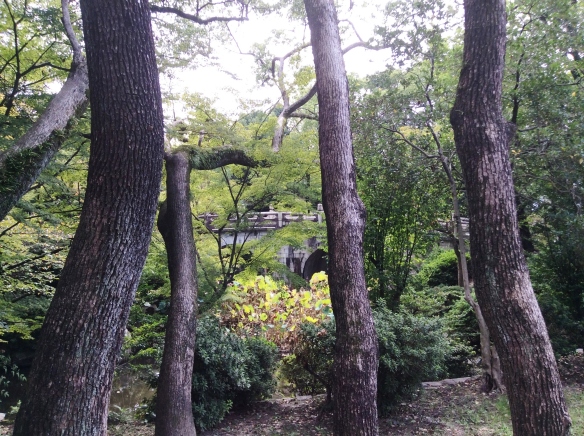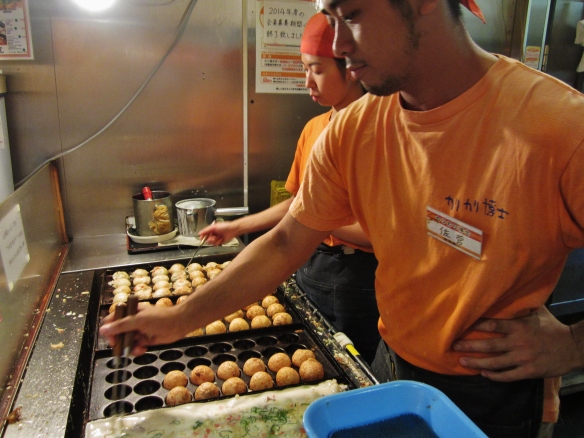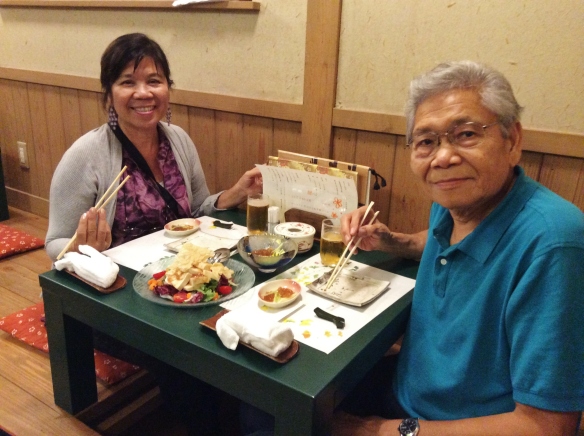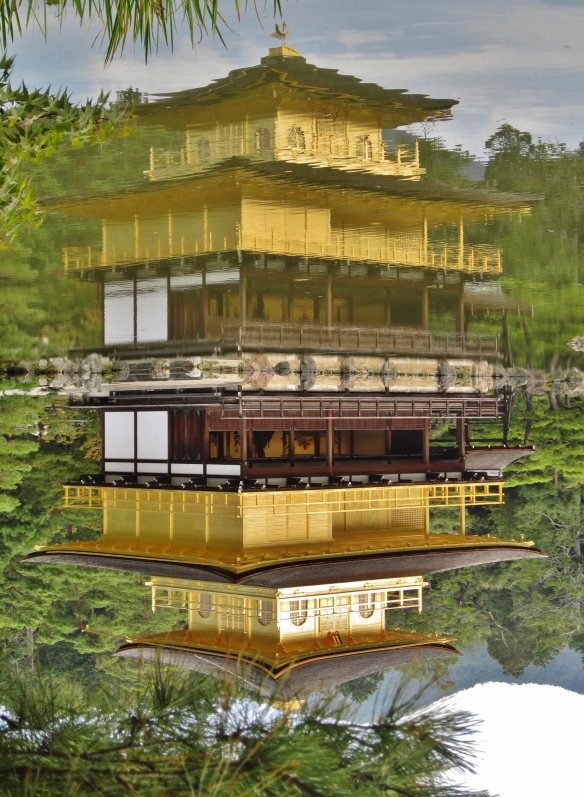Despite “Tokyo may be the capital of Japan but Kyoto is its heart and soul.”…Juliet Winters Carpenter Kyoto was Japan’s capital for 1,000 years, and its glorious past honored in its thousands of monuments and UNESCO World Heritage sites. Spared by bombing during World War II, the city holds 20 percent of Japan’s national treasures, including more than 1,700 Buddhist temples and 300 Shinto shrines, all dispersed (often hidden) amidst its modern cityscape. Exploring Kyoto is like traveling through 11 centuries of Japan’s history, getting a glimpse of its past in its temples and gardens. While its modern side, delights you with sophistication and contemporary innovation. With over 1700 temples in Kyoto, choosing a few to see on a short visit to the city can be a daunting task. It will behoove you to read some travel guides to help you narrow down which ones you want to see. There are temples that are best overall; and others best for garden lovers, for Zen, for quiet contemplation, for kids. Reading description and seeing photos of the different temples will surely make it easy to narrow down your list. For added efficiency, better use of limited time and to optimize sites to visit, it’s best to group temples in the same area when planning your itinerary. Oct. 9, 2014 Kyoto Station Our journey from Hakone to Kyoto lasted 4 hours. Kyoto station is quite impressive. It’s built with modern architecture, huge and really nice. There are two levels filled with several shops and many restaurants; almost a destination in itself and wanted to explore right then…but 1st things first.
Our plan was to 1st find the JR Office to exchange our JR Pass for train tickets to go to Osaka Int’l airport (KIX) for our flight to Hong Kong after Kyoto. The JR Kansai West pass, is a discounted train fare available ONLY to tourist and must be purchased outside of Japan. I purchased our pass online from one of the listed travel agencies in California ($19 US per person). Despite plenty of signs and a sketch map on hand from the Tourist center, we struggled and took us a while to find the right JR office. There are so many JR Office (one for West, East, etc), and very confusing to say the least. Our next ordeal was locating the MK VIP taxi service counter. Hyatt Kyoto Regency, our hotel, contracted with them to transport hotel guests from the station to the hotel and they pick up the cab fare. Lost and frustrated, compounded by difficulty finding someone who can speak or understand English, we were ecstatic to finally find where it is. Turned out it’s just outside, across the street from the station’s main entrance. I nearly got hit by a car as I eagerly tried to cross the street. Hyatt Kyoto Regency hotel We reached our hotel in less than 15 minutes. I used Hyatt points to book our 3 nights here; hotel being fully booked I did not get a room upgrade The lobby is big and modern, but the hallways are narrow and with very low ceilings felt really small and outdated. Our room was tiny with windows to match, albeit overlooks a small garden. I liked that our room is bright and cheery, decorated with bright-colored panels. This place is definitely, a few notches down from other Hyatt properties we’ve been to and rate it between 3 to 31/2 *.
As this place has no Club Lounge, we got vouchers (perk of being a Diamond member) to have access for free buffet breakfast during our stay at the Grill restaurant, which was quite good and offered variety of choices. Best thing I like about this hotel is its convenient location. The bus stop for line 100,101,102 is only few steps from the hotel and a MRT station only 500 meters away, about 7 min easy walk. There are attractions nearby: 5 min walk to Sanjusangendo Temple and right across the hotel is Kyoto Art Museum. A big crowd lined up every day to go to the museum , which we did not have time to go. We managed to go to Sanjusangendo Temple one afternoon.. Sanjusangendo Temple At 120 meters long (394 feet), this wooden hall is the longest in Japan and houses all of 1,001 statues of Kannon, the Buddhist goddess of mercy. The human-sized statues were carved from Japanese cypress dating back to the 13th century. No pictures allowed inside. The place reminded me of Terra-Cotta Warriors in Xian, China.
McDonald’s October/Halloween Special I was eager to try McDonald’s black burger in Tokyo, but it was not available until Oct.9. When we found out there’s a McDonald only 500 meters away from our hotel, guess where we headed for dinner on our 1st night in Kyoto? It’s a burger served on black roll (flavored with Octopus ink) with Japanese condiments. It tasted kinda like a umami burger, and enjoyed every bite of it. With Keihan Railway station (Shichijo) just across McDonald’s and feeling adventurous, we ventured into downtown Kyoto to find the Gion district, and hopefully spot a Maiko or geisha. Unfortunately, we never found Gion, and surprised locals (mostly young ones) have not heard of it. Booking a tea ceremony (very expensive) served with geisha is the only sure bet. NOTE: I must say we found Japanese people are very polite, kind and helpful, esp. those who understand some English. They went out of their way, even walking a few blocks to help us find the right bus stop, a restaurant or a market. Some used their smart phone if unfamiliar with the place we wanted to go to. Despite lack of ability to communicate as most locals don’t speak English, Japan is a good and safe place to get lost. Oct. 10, 2014 A MUST DO on my list while in Japan is to walk the streets dressed in Kimono. originally planned to rent in Tokyo from a shop in Asakusa, but due to typhoon expected to hit Tokyo I decided rent in Kyoto. I figured, what better way to experience Japan’s culture and tradition? I chose to rent from Okimoto Kimono rental shop based on its good review, wide choice of fabric and availability of a studio sitting with a professional photographer. The place was not easy to find for the streets have no names.
We took an early (1st appointment of the day) and got to the shop around 9:00am. The whole process; choosing fabric color & designs, getting fitted and hairstyle took about an hour as I was 1st to be fitted. The average time is 1 1/2 to 2 hours. By 10:15am, my husband and I posed for some photos and head out to walk the streets towards Kiyumizudera temple, in style. See a separate blog “Kyoto Walks in Style”. 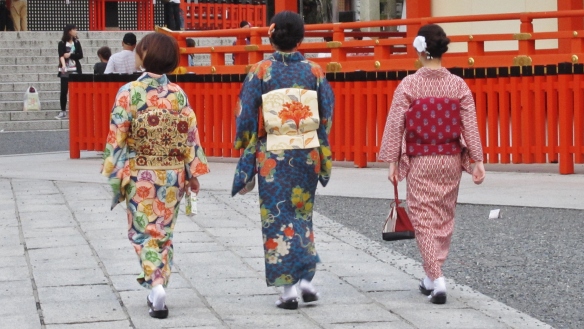 Kiyumizudera Temple Located on the eastern part of Kyoto , the temple was founded in 778 and re-constructed in 1633 and in 1994 became a UNESCO world heritage site. The temple is best known for its wooden stage jutting out from its main hall, 13 meters above the hillside, affording visitors a nice view of cherry and maple trees (spectacular in spring and fall) and a view of the city from a distance.
Kiyumizudera Temple Located on the eastern part of Kyoto , the temple was founded in 778 and re-constructed in 1633 and in 1994 became a UNESCO world heritage site. The temple is best known for its wooden stage jutting out from its main hall, 13 meters above the hillside, affording visitors a nice view of cherry and maple trees (spectacular in spring and fall) and a view of the city from a distance.
The weather today turned out to be clear and sunny, despite predictions for light showers. It made walking the streets in Kimono much easy, but at the same time uncomfortable if you’re wearing multi-layered garment on a hot day.
The main street leading to Kiyumizudera Temple is lined with souvenir shops, local foods & snacks. We enjoyed sampling some of the street foods. It was also packed with tourist, locals and students who must be taking school field trips. There were several people, locals and tourists, dressed in Kimono. Such an interesting sight, mingling of traditional and modern, the old and the new.
I read it’s not uncommon for visitors to ask if they can have a picture with you, if you’re wearing Kimono. Honestly, I won’t mind (makes me feel like a celebrity), and was truly disappointed when nobody asked. So what did I do? See for yourself on the photo below..
 Our stomach growling, signaled it’s lunchtime. We shared a plate of salad and a bowl of the best tasting cold soba and refreshing ice-cold bottled green tea. Seated on 2nd floor with view of the busy street, we lingered at the restaurant for a while and enjoyed people-watching. The heat became intolerable, hot and sweaty, we returned to the rental shop around 2:00pm. The shop was full and crowded, with people packed like sardines. So, like I said best to schedule your appointment early. What a relief to be back to our street clothes, and sought further relief with a cone of green tea ice cream and a nice relaxing view of a park.
Our stomach growling, signaled it’s lunchtime. We shared a plate of salad and a bowl of the best tasting cold soba and refreshing ice-cold bottled green tea. Seated on 2nd floor with view of the busy street, we lingered at the restaurant for a while and enjoyed people-watching. The heat became intolerable, hot and sweaty, we returned to the rental shop around 2:00pm. The shop was full and crowded, with people packed like sardines. So, like I said best to schedule your appointment early. What a relief to be back to our street clothes, and sought further relief with a cone of green tea ice cream and a nice relaxing view of a park.
Nishiki market, a sensory overload We always include going to a local market when visiting a foreign country. It’s an interesting way to learn about its people, their culture and try some of their traditional foods. Besides I, not so much my hubby, has an adventurous palate and willing to eat or try anything and everything. Nishiki market consists of stalls enclosed in a colorful and attractive roof, making it convenient to visit, rain or shine. Some may get offended, and others get excited with the sights and pungent odors from pickled veggies and all kinds of dried seafood. There’s an abundance of foods cooked and pre-cooked, and some offer free sample tasting. Food galore, exotic and bizarre is the best way to describe this place.
There are plenty varieties of fruits and vegetables, both familiar and unfamiliar to us. Most intriguing was the giant chestnut displayed on its shell or casing.
A big crowd hovering one stall caught our eyes. We watched them cook octopus balls and experienced for the 1st time ordering food from a vending machine, a practice very common in Japan. Fresh from the grill, served with spicy sauce…yummy!
Fushimi Inari Shrine Located in southern Kyoto, just outside JR Inari Station, getting here was fairly easy. From Kyoto station, we took JR Nara line and got off at the 2nd stop. Ride took about 5 min and cost 140 Yen one way. If we only have time to visit two places in Kyoto, they would be Fushimi Inari and the Golden Pavillion.
Fushimi Inari Shrine is the most important of thousands of shrines originally dedicated to Inari, the Shinto god of rice. Inari now governs success and prosperity in business, and draws thousands of businessmen and tradespeople seeking blessings for their enterprises, especially at the first prayers of the New Year.  Most remarkable is the sight of some 10,000 torii (shrine gates) that lined and arched over a long path up the hill. Each tori was donated and inscribed by businesses and people thankful for their prosperity. It takes about two hours to walk the trail. We arrived here at dusk, where crowd died down and made it easier to get a shot of the tori gate without people on the background. But still, unless you’re quick with your camera you have to be patient and wait a while. The long tunnel of tori is one of the most iconic visions of Kyoto, and was worth the wait to get that perfect shot.
Most remarkable is the sight of some 10,000 torii (shrine gates) that lined and arched over a long path up the hill. Each tori was donated and inscribed by businesses and people thankful for their prosperity. It takes about two hours to walk the trail. We arrived here at dusk, where crowd died down and made it easier to get a shot of the tori gate without people on the background. But still, unless you’re quick with your camera you have to be patient and wait a while. The long tunnel of tori is one of the most iconic visions of Kyoto, and was worth the wait to get that perfect shot.
 Back to our hotel to get some rest, then to Gion later in the evening. Gion District, and no luck spotting a Maiko or Geisha By now, we felt very comfortable navigating Kyoto using metro. Transport options (train, metro, subway, bus) are less intimidating to us than Tokyo as it was smaller and easier to follow. One of the reasons, we like and love Kyoto more than Tokyo. It was drizzling lightly as we walked the narrow alleys in Gion District. Both sides are lined with many restaurants, menu & prices displayed outside, some in English but mostly in Japanese. Menu prices here are expensive, and usually hard to get in without reservations, but this evening most of the restaurants were empty. A good amount of crowd perused the long alley deciding where to eat, including us.
Back to our hotel to get some rest, then to Gion later in the evening. Gion District, and no luck spotting a Maiko or Geisha By now, we felt very comfortable navigating Kyoto using metro. Transport options (train, metro, subway, bus) are less intimidating to us than Tokyo as it was smaller and easier to follow. One of the reasons, we like and love Kyoto more than Tokyo. It was drizzling lightly as we walked the narrow alleys in Gion District. Both sides are lined with many restaurants, menu & prices displayed outside, some in English but mostly in Japanese. Menu prices here are expensive, and usually hard to get in without reservations, but this evening most of the restaurants were empty. A good amount of crowd perused the long alley deciding where to eat, including us.
We chose a place with English menu, reasonably priced with entrees around $10 -12 US, and dishes more fusion style. They offered two types of seating, typical Japanese style or one where your leg hang, which my hubby preferred.. I ordered jelly salad, a tofu green salad, a plate of sushi sampler and beer We started off with the Chef’s special (cost $5 pp), a small piece of fish fillet served with special sauce, not bad. We’ve never had jelly fish and liked it. Its texture was sort of soft, rubbery and paired well with acidic dressing. Thumbs up as well for the mixed green salad with slices of soft tofu…so fresh, very smooth texture with slight sweetness.
 We eagerly waited for the sushi plate, anxious to compare to sushi in the States. About 25-30 min later, our waitress had not returned with our sushi. With angst, Ramon got up and asked our waitress for our order. To our dismay, she forgot to include it in our order and decided to cancel. Oddly enough, this was our only chance to try sushi while in Japan for we already have dinner reservations tomorrow our last night at Giro Giro. Oh well, some things just were not meant to be. October 11, 2014 So many temples to see so little time, but it’s OK. At our age, we are content if we only saw a few . Once upon a time, we had the impossible dream of wanting to seeing it all. Now, we prefer a more relaxed, and not so rushed sightseeing. Arashiyama It was a short bus ride from our hotel to Kyoto station where we took the JR Sagano line to get to Arashiyama, (a 15 min ride, cost 240 yen). We got off at Arashiyama Saga station, which was another 15 min walk to get to central Arashiyama. Getting to the Bamboo grove and main road of Arashiyama we saw beautiful structures and plants; and early signs of autumn colors.
We eagerly waited for the sushi plate, anxious to compare to sushi in the States. About 25-30 min later, our waitress had not returned with our sushi. With angst, Ramon got up and asked our waitress for our order. To our dismay, she forgot to include it in our order and decided to cancel. Oddly enough, this was our only chance to try sushi while in Japan for we already have dinner reservations tomorrow our last night at Giro Giro. Oh well, some things just were not meant to be. October 11, 2014 So many temples to see so little time, but it’s OK. At our age, we are content if we only saw a few . Once upon a time, we had the impossible dream of wanting to seeing it all. Now, we prefer a more relaxed, and not so rushed sightseeing. Arashiyama It was a short bus ride from our hotel to Kyoto station where we took the JR Sagano line to get to Arashiyama, (a 15 min ride, cost 240 yen). We got off at Arashiyama Saga station, which was another 15 min walk to get to central Arashiyama. Getting to the Bamboo grove and main road of Arashiyama we saw beautiful structures and plants; and early signs of autumn colors. 
 Bamboo grove is one of the attractions here, and was already crowded despite getting here early. We saw some visitors riding on rickshaw being shown around pulled by well-built, tan and good-looking young men.
Bamboo grove is one of the attractions here, and was already crowded despite getting here early. We saw some visitors riding on rickshaw being shown around pulled by well-built, tan and good-looking young men.
 It would have been nice to ride one and experience the way nobles were transported back in the 10th century, but we were short on Yen. I could not believe as busy and popular Arashiyama is, that it does not have any ATM, money changers or 7 Eleven. Being a Saturday there were no banks opened. We thought of going back to Kyoto station to exchange, but on the last-minute we found a woman who pointed us to a shop (money changer). Relieved and starving we ate lunch before continuing to our next site. Tenryuji Temple This sprawling Zen Buddhist temple is one of the five great Zen temples of Kyoto. Founded in 1339 at the beginning of the Muromachi Period (1338-1573), Tenryuji has become a UNESCO World Heritage Site. We walked its ground and admired its beautiful gardens, but did not bother going inside the temple.
It would have been nice to ride one and experience the way nobles were transported back in the 10th century, but we were short on Yen. I could not believe as busy and popular Arashiyama is, that it does not have any ATM, money changers or 7 Eleven. Being a Saturday there were no banks opened. We thought of going back to Kyoto station to exchange, but on the last-minute we found a woman who pointed us to a shop (money changer). Relieved and starving we ate lunch before continuing to our next site. Tenryuji Temple This sprawling Zen Buddhist temple is one of the five great Zen temples of Kyoto. Founded in 1339 at the beginning of the Muromachi Period (1338-1573), Tenryuji has become a UNESCO World Heritage Site. We walked its ground and admired its beautiful gardens, but did not bother going inside the temple. 
 Togetsukyo bridge Continued our walk along the main street with shops and restaurants toward Togetsukyo bridge. The view of the river surrounded by hills dotted with trees was beautiful. I could just imagine how spectacular the view would be when foliage changed to autumn colors later in the month. We were here mid-October and only a handful of trees were starting to change colors.
Togetsukyo bridge Continued our walk along the main street with shops and restaurants toward Togetsukyo bridge. The view of the river surrounded by hills dotted with trees was beautiful. I could just imagine how spectacular the view would be when foliage changed to autumn colors later in the month. We were here mid-October and only a handful of trees were starting to change colors. 

 We lucked out and witness a local parade, and stayed for a little while before we headed back to Randen station.
We lucked out and witness a local parade, and stayed for a little while before we headed back to Randen station.  Kinkaku-ji (Golden Pavillion) A taxi from Arashiyama to Kinkaku-ji takes about 20 min and cost Y1900. Going back to Kyoto station to take the line to Kinkaku-ji is cheaper, but takes longer as you would be backtracking. A better option, and cheap was taking the purple train Keifuku-line (also known as Randen) to Royouan-ji, and from here take a bus to Kinkaku-ji. You’ll find Randen on Arashiyama’s main road, not too far from the Togetsukyo bridge. Popularly known as the Golden Pavillion, it was the retirement villa of the shogun Ashikaga Yoshimitsu, and after his death in 1408 and in accordance to his will became a Zen temple of the Rinzai sect. . It has burned down many times throughout its history including twice during a civil war that destroyed much of Kyoto; and once again more recently in 1950 when a fanatic monk set it on fire. The present structure was rebuilt in 1955.
Kinkaku-ji (Golden Pavillion) A taxi from Arashiyama to Kinkaku-ji takes about 20 min and cost Y1900. Going back to Kyoto station to take the line to Kinkaku-ji is cheaper, but takes longer as you would be backtracking. A better option, and cheap was taking the purple train Keifuku-line (also known as Randen) to Royouan-ji, and from here take a bus to Kinkaku-ji. You’ll find Randen on Arashiyama’s main road, not too far from the Togetsukyo bridge. Popularly known as the Golden Pavillion, it was the retirement villa of the shogun Ashikaga Yoshimitsu, and after his death in 1408 and in accordance to his will became a Zen temple of the Rinzai sect. . It has burned down many times throughout its history including twice during a civil war that destroyed much of Kyoto; and once again more recently in 1950 when a fanatic monk set it on fire. The present structure was rebuilt in 1955.
Without a doubt, the Golden Pavillion impressed me the most and my favorite temple. The impressive structure of the temple, with top two floors covered in gold leaf, was built overlooking a large pond. The view of the temple reflected on the lake is simply breathtaking. This place is always crowded and you just have to force your way to the front for your turn to get a good shot.
On the way out, we followed a path and passed through the temples garden stopping at Anmintaku Pond where people throw coins for good luck. There is a tea house if you wish to sit down and have some tea. An Unforgettable Dining Experience While in the States doing my research for our trip, I read raving reviews about dining at Giro Giro Hitoshina; exceptional, affordable kaiseiki dinner, and advanced reservations a MUST. It cost about $36 US per person for an 8-course dinner; with each course prepared right in front of you (if seated at the bar).Their website written in Japanese, so I was not able to make reservations before we left US for Japan. As soon as we got to Hyatt Kyoto Regency, I went to the Concierge desk and requested if they could make dinner reservations for us at Giro Giro Hitoshina. I indicated we would take whatever day and time was available as long we would be seated at the bar on the 1st floor. We received good news the next day that we have dinner reserved at 5:30pm on our last night in Kyoto. I was confident we won’t have any trouble finding Giro Giro Hitoshina, but left our hotel early, in case we get lost, and arrived an hour and a half early. To kill time, we watched a group of children play at a nearby park; walked around the neighborhood while admiring its beautiful surroundings.
Curious to see exactly where the restaurant is, we followed Google walking directions but could not find the restaurant. What the____, we’re lost again! Lo and behold, a young man we approached speak some English and was eager to converse with us, and best of all know where Giro Giro is. He walked us up to the front of the restaurant. And he was right, it’s better to take us there than explained how to get there. There was no way on earth we would have found it for they only put out a small sign outside when they opened at 5:30pm. What a lovely ending to our stay in Kyoto. Truly an amazing and wonderful experience and a highlight of our trip to Kyoto. See a separate blog “Gastronomic Experience at Giro Giro in Kyoto”. Tomorrow, we’ll take a shinkansen train to Osaka International Airport (KIX) to leave for Hong Kong….part of our 3-Week Tour of Asia.
